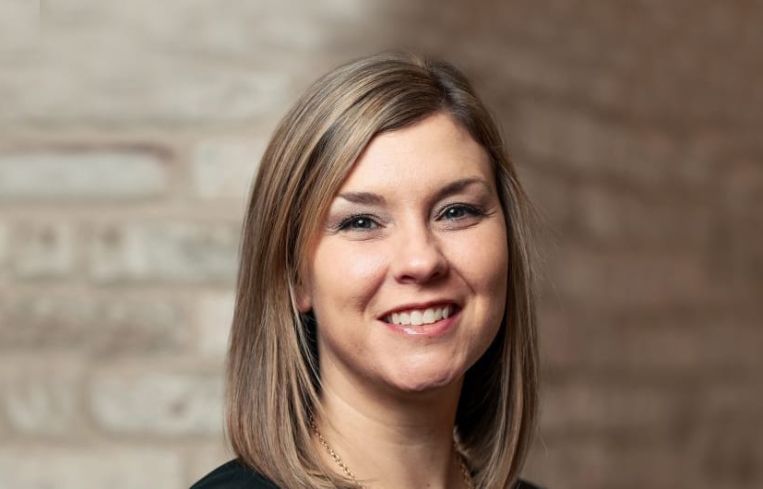Presented By: Capital One
Capital One’s Kate Byford Considers the Prognosis for Multifamily in 2021
By Capital One November 9, 2020 8:00 am
reprints
Kate Byford is relatively new to her post as the head of agency finance for Capital One, but she’s an industry veteran whose faith in the apartment sector is supported by her 16 years in the business.
Previously, Byford was the head of capital markets and chief operating officer for Capital One Multifamily Finance. Before that, she spent a decade at Freddie Mac, ending her tenure there as senior director and head of multifamily pricing.
With a stimulus bill off the table for the time being, Commercial Observer’s Partner Insights team caught up with Byford to find out her sense of the near-term impacts and long-term prospects for multifamily.
Commercial Observer Partner Insights: You became head of agency finance in the midst of a pandemic. That sounds daunting.
Kate Byford: Actually, it’s anything but. This has been a remarkable year for the [Fannie Mac and Freddie Mac] agencies, which have done an exceptional job navigating a series of shocks and challenges that no one could have imagined back in 2019, when their caps were announced.
Fannie and Freddie have risen to the challenge magnificently and are on track to meet their targets. Their mission is to provide stability, liquidity, and affordability into the multifamily market — and they succeeded on all three counts.
At the same time, I am very excited to help take our agency finance platform to the next level.
Capital One is deeply committed to the business — we have an outstanding team, and the pace of transactions here is on the rise.
Are there any transactions you can talk about?
Sure. We recently provided $270 million in Freddie Mac loans to a unit of Lone Star Funds for the purchase of five, new Dallas apartment communities totaling nearly 2,000 units. This made it one of the largest transactions of its kind in North Texas.
What’s striking about this crisis is the divergent fates of the different commercial real estate asset classes. What’s your assessment of how multifamily has fared?
We’ve seen that rental payments have continued to be prioritized during the pandemic, given that people always need a place to live. That’s turned out to be fundamental in a way that going to the office or traveling for business and staying in a hotel are not.
By and large, multifamily has done well during the crisis, helped in large measure by the stimulus package enacted when the crisis began. And, because there has been a boom in residential property during the pandemic, people who might otherwise have purchased a home are still renting.
Are there areas and building types that are doing better than others?
Suburban apartments are generally doing fine, and some have actually seen compressed cap rates as low interest rates and minimal COVID-19 impact, so far, drive strong pricing. But properties like student housing and Class A New York City apartments are struggling with lower occupancies and declining rents. There is a limit to how much the suburbs can absorb right now — and with many cities holding their own right now in face of rising cases, we could see a reverse migration.
What is your prognosis in the short term and beyond?
I think there is a fair amount of uncertainty around the next few months. However, I am confident that the agencies will be stepping in, as they have in 2020, to provide liquidity and financing. And, certainly, another stimulus package, as well as fundamental regulatory, tax and legislative reform, would be very helpful to help tide tenants and landlords over through the pandemic.
Regardless, we remain committed to the asset class and believe in its long-term resiliency. If anything, once the pandemic is behind us, there will be a great deal of opportunity in multifamily.
In the suburbs, town center developments are a logical successor to underused mall real estate — and we are likely to see conversion of Class B and C office space to multifamily in city centers. If the incentives are there, these conversions may help alleviate the shortage of affordable housing.
Certainly, the agencies’ commitment to affordable housing is as strong as ever.
That’s right. Fannie and Freddie remain deeply committed to expanding the stock of affordable housing and will continue to focus on that front in 2021 and beyond.
Capital One has continued to close a steady stream of affordable transactions with the agencies. A fairly typical transaction is one we completed this summer for a community in Colorado under Fannie Mae’s Multifamily Affordable Housing properties program. More than 20 percent of the units are restricted to 50 percent or less of [area median income].
This emphasis dovetails nicely with Capital One’s Impact Initiative, which we announced at the beginning of October. We are committing $200 million over five years to support growth in underserved communities and advance socioeconomic mobility by closing gaps in equity and opportunity.
One of the five areas that we are focusing on is affordable housing. We talk about our core mission at Capital One as changing banking for good. By financing affordable housing communities, we are changing lives for good. We also continue to focus on diversity and inclusion, which is a priority for me, as I take on this new role and an initiative that I care deeply about.



